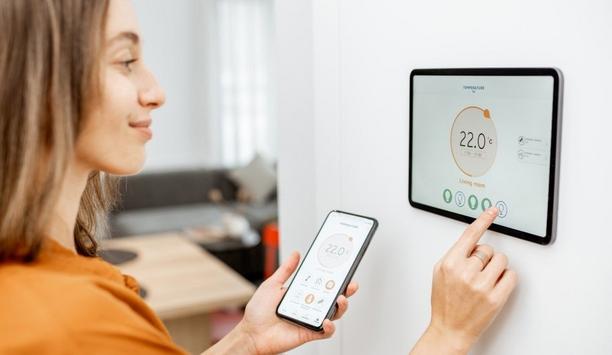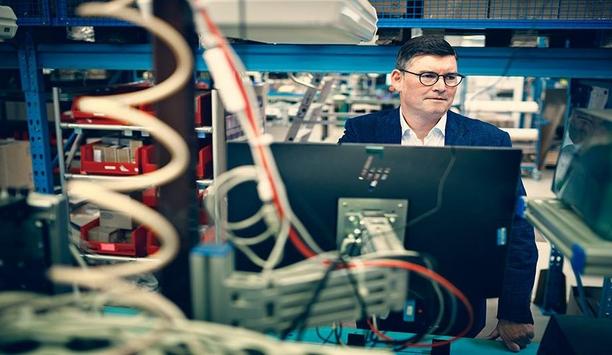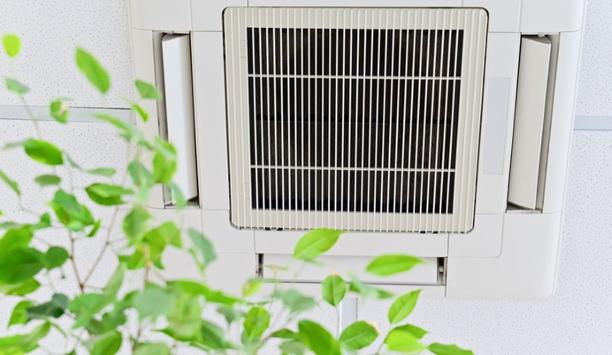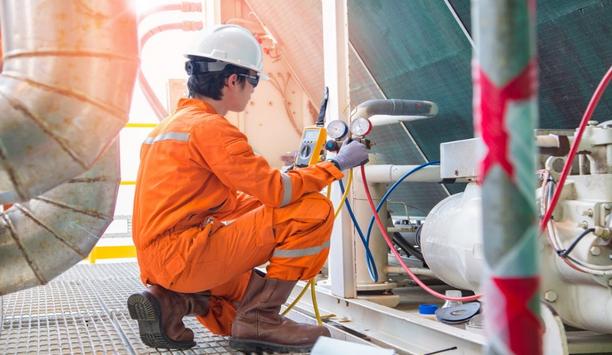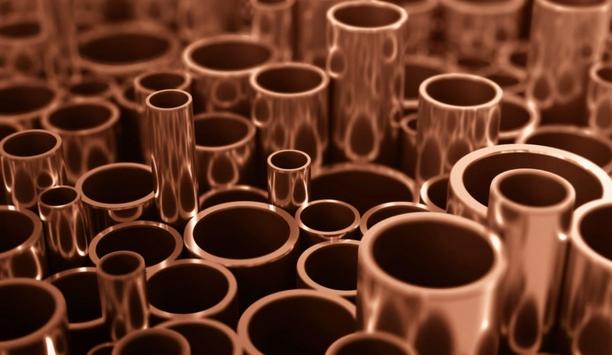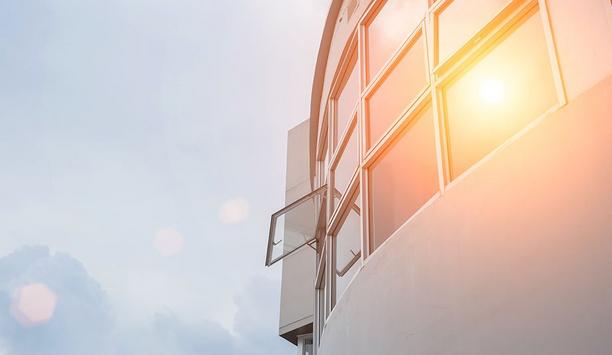Expert Commentary: HVAC Trends & Analysis
Circularity. Some may call it a “hot topic.” But in reality, the concept and practice of circularity is here to stay, indefinitely, for the simple reason that the sustainability of our planet depends on it. Whatever type of product you sell, “widget” you manufacture, or service you provide, achieving circularity, that is, putting practices in place so that materials remain in circulation and never become waste is finding its way onto the priority list of every business....
Using air conditioners and electric fans to stay cool accounts for nearly 20% of the total electricity used in buildings around the world, according to a report from the International Energy Agency. hybrid work model As a unique mix of key factors, such as the adoption of the hybrid work model and escalating heatwaves in certain regions of the United States keep people indoors for longer periods, this 20% share represents an increasingly costly line item on household budgets. Those within th...
According to some recent estimates, the cooling industry accounts for approximately 10% of global carbon dioxide (CO2) emissions. To place this in perspective, the transportation sector, as the highest contributor, accounts for approximately 20% of global CO2 emissions. While some may see this as a “glass half empty” scenario, the better approach is the one taken by key players in the HVACR space. As we see it, because the cooling industry has been a source of significant emis...
Most consumers choose an HVAC contractor based on their online reviews. Before making a final decision, potential customers actively look for what others have to say about your business, and having plenty of online positive reviews automatically positions you as a top pick. Reviews Reviews also help you rank higher in search results, and buyers are willing to pay more for brands with lots of strong reviews. So how do you get more of them? First, you have to create great customer experiences....
Energy bills for small businesses have become a major issue throughout 2023. As prices have risen drastically over the last twelve months, SMEs have been relying on the government’s Energy Bill Relief Scheme. Originally set up to support livelihoods, energy bills for businesses in the public sector were capped at £2,500 per year. However, in March, the government support scheme was replaced with the scaled-down Energy Bill Discount Scheme, leaving businesses and public sector organ...
Summer may not seem like the most opportune time to be selling heating products and solutions. The temperatures are already hot, so why would a homeowner need to worry about their heating source? For many HVAC clients, the idea of being proactive before the cold weather drops is foreign. That’s why contractors need to remind them of the importance of focusing on their heating units during the summer. capitalize on heating solutions There are plenty of opportunities available for contra...
Today’s HVAC contractors are acutely aware that they need visibility on the internet and in their community if they want the phones to ring with requests for new business. As a result, HVAC company leaders have become savvy about marketing and advertising and know that search engine optimization, direct mail flyers, and flashy truck wraps attract attention. Public relations But what they don’t stop to think about is that their competitors likely have a very similar marketing strat...
You’re looking for ways to increase revenue for your HVAC business, and texting is one more tool you can add to your arsenal. 70% of people report that texting is the fastest way to reach them, and 99% of texts are read within just a few minutes. That kind of speed can help you secure more appointments, get paid faster, land more referrals, and boost sales in general. Scheduling service appointments So where do you begin? Below, we’ll show you five tactics your HVAC business can...
Any time you enter into an agreement with a business or partner, they may want to check that everything is shipshape. What Is a Certificate of Insurance? - If you own a business, chances are you have certificates of all kinds on your wall, whether they be your hard-earned college degree or the certification needed by your city to run your business. These certificates prove that you’ve passed your classes or have met the requirements set out by the city. A certificate of insurance is simil...
Patented new filtration technology proved it can upgrade AC units and Air Curtains to become highly effective Air Purifiers. Background and problem AC Split Units and Air Curtains employ coarse dust filters that are normally installed within the housing at the air return vent to allow for frequent filter cleaning. While this vital activity is generally performed on a regular basis in professional settings, it may be overlooked in home settings, leading to the clogging of these filters. This de...
Coastal and tropical areas present their own unique challenges for business and residential HVAC units. For these machines, which we use to create comfortable, safe air for occupants, corrosion is enemy number one in high moisture environments. Due to the high level of moisture and salts in the air along the coast, HVAC solutions are more susceptible to corrosion. These salts can negatively impact unprotected coil fins and metal surfaces, causing them to corrode, which can ultimately lead to s...
With each passing year, more and more individuals are becoming conscious of the importance of sustainability. As a result, there has been a boom in the electric vehicle (EVs) market. According to the International Energy Agency, the sales of EVs doubled in 2021 with nearly 10% of global car sales being electric. Two million electric vehicles were sold in the first quarter of 2022 alone. It was estimated that 13% of new cars sold in 2022 would be electric. Gas-Powered vehicle For those who cho...
When your HVAC system isn't working correctly, it's often difficult to pinpoint the exact issue. Does your home have hot and cold spots? Do doors randomly close on their own? Is your A/C blowing warm air on a hot summer day? If so, your HVAC might have an uneven airflow. There are many symptoms of uneven airflow and many solutions. Amid the increasing demand for HVAC repair, homeowners need to learn how to keep their home system operating at its best. Understanding the potential causes of unev...
Each day we’re reading headlines about decarbonization ambitions for buildings while challenged with supporting day-to-day operational needs. Yet, we’re still tasked with delivering energy and cost reductions. Given the magnitude of energy consumption and the importance to occupant/tenant comfort, HVAC systems warrant significant attention. There are a lot of options with new equipment and controls to drive energy use down and enhance overall comfort that are very impactful, when bu...
The energy savings due to the lowering of heating temperatures during unoccupied periods can exceed 20% in the tertiary sector and 30% in the education sector. When buildings are not occupied continuously, the idling or even the optimized shutdown of heating systems is one of the main sources of energy savings. heating system consumption Indeed the heating system consumption matches the thermal loss of heated buildings. When we willingly let the internal temperature drop during a vacant...
Poor indoor air quality (IAQ) has been a longstanding problem within educational institutions, where it has been known to affect productivity and performance, as well as mental and physical health. And it’s not just the pupils at risk, with studies finding that this deleterious phenomenon can also compromise teaching performance and delivery, which inevitably affects the quality of the information received. CO2 concentrations This has recently been evidenced in a study conducted by the U...
With the UK experiencing increasingly warmer summers and more frequent heatwaves, we’re equally seeing more air conditioning units installed in both commercial and residential spaces. As the demand for air conditioning continues to increase, so too will the demand for copper pipes. Copper is a trusted and reliable material that air conditioning installers have been using for many years and, not only that, it’s also infinitely recyclable – making it a sustainable alternative to...
A preventive maintenance program could save 12-18% over reactive maintenance, as the U.S. Department of Energy predicted in 2010. For many businesses, the savings could be higher, considering the risks of downtime and today’s economic conditions pushing up costs across the supply chain. It’s also possible for a program to miss the mark. By one measure, 50% of the costs of a preventive maintenance program are often wasted. The question is, how do you know if your maintenance program...
The importance of caring for the environment has become a top priority both around the world and increasingly in the United States. As regulations and social expectations become more stringent, future-proofing our infrastructure - beginning with energy consumption in buildings - is a natural first step. There are four key strategies a building owner or facility manager can focus on to improve energy efficiency and reduce a building’s carbon footprint, all while improving building performa...
Achieving carbon neutrality has, once more, become a business priority. Whilst COVID-19 distracted attention away from the drive towards Net Zero, green issues are once more back on the agenda and rising to the top of it. Building specifications The built environment accounts for around 28-40% of global emissions, so there is a collective ambition to start specifying buildings with as low a carbon footprint as possible. This is particularly true of commercial office spaces where operational...
Following the UK Chancellor of the Exchequer Rishi Sunak’s Spring Statement on 23 March, several imminent and future changes were laid out by the UK government. This included VAT scrappage for residential energy-saving measures like heat pumps and solar panels, a 12-month cutting of fuel duty by 5p per liter, and to support the decarbonization of commercial premises, targeted business rate exemptions for eligible plant and machinery used in onsite renewable energy generation and stora...
As COVID-19 becomes endemic and hybrid working becomes the norm, a great deal of time and energy is going into managing a safe return to the office and a move to new styles of working. As hard FM systems are adjusted to suit new workplace expectations and futureproof sites, Johnpaul Pearson, Business Support Director at Anabas, talks about understanding workplaces and using technology to better design and plan a workplace of the future. Even before the COVID-19 pandemic struck, we were witnessi...
‘Energy storage holds the key to providing clean energy for heating and powering the home and reducing carbon emissions’ Carlton Cummins, CTO and Co-Founder of clean technology company Aceleron explain how this will work. As we transition away from natural gas and other fossil fuels, there is no question that we absolutely have to make better use of renewable energy. Using a battery energy storage system (BESS) combined with renewable technology such as solar means that it can be st...
Energy consumption continues to be one of the primary contributors to a building’s carbon emissions and its operational costs. Around 40% of this energy is used to power HVAC systems. To improve sustainability and reduce operating costs, it’s in a building owner’s best interest to find ways to make their building’s heating and cooling systems more efficient. Identifying areas that will make the biggest difference starts with knowing which systems consume the most energy...
Net-zero is high up on the agenda. And to achieve the UK’s carbon-neutral pledge by 2050 the country’s building stock must be decarbonized. Embodied carbon When we talk about decarbonizing buildings, there are two distinct categories of emissions that come into play. The first is embodied carbon. Here, the embodied carbon of a building includes emissions deriving from the construction materials, the building process, and the fixtures and fittings inside. It also covers emissions f...
Environmental ventilation is an incredibly important element of any building. It uses the natural, external airflow through a building to make the internal climate healthier. When appropriate environmental control is implemented, the benefits include better air quality, reduced CO2 emissions, and lower overhead costs. However, it’s not all sunshine and roses. This presents some issues that must be addressed. Residential buildings often use centralized heating systems, boilers, and ho...
Ventilation systems have never been more important as we battle against an ever-evolving pandemic, and crucially, they must be installed correctly to deliver good indoor air quality for years to come. David Millward, Group Product Manager at Elta Group, explains the practical considerations needed for contractors in charge of installing them. Good indoor air quality (IAQ) With a pandemic that has been raging for going on two years, there has never been a time where good indoor air quality (IAQ...
With COP26 behind us, the words ‘Net Zero’ still hangs heavy in the air as we look to make the most of the momentum gained by the summit. On the face of it, it’s a daunting task. However, like so many challenges in life, it becomes considerably more manageable when broken down into smaller steps. It’s now a widely accepted fact that lighting, heating, and cooling operating emissions account for a significant proportion (28%) of all carbon emissions emitted by building an...
Decarbonizing heat is one of, if not the biggest challenges we face in our journey to net zero. Most of the heat in UK homes and businesses is currently provided through fossil fuels, predominantly gas. Gas releases carbon emissions and other particles that are bad for air quality and bad for our environment. So, to get to net-zero we need to replace gas as our main source of heat. The Government plans to phase out gas boilers in newly build homes from 2025, but with the vast majority of exist...
Indoor air quality (IAQ) has never been closer to the forefront of the public mind. After all, the COVID-19 pandemic is still ongoing. The government’s scientific advisors have warned that, during the coming winter, daily hospitalizations could plausibly reach heights of 7,000 per day. And, of course, we are all thoroughly aware at this point that COVID is an airborne virus and, as such, spreads very effectively indoors – a fact which many people will have reflected on as they...
Browse expert commentaries
Related videos
Introduction | Decarbonization Explained | Danfoss
Munters LCX Liquid-To-Liquid Coolant Distribution Units
Van Buren School District
Editor's Note
From A To L: Your A2L Transition Guide
DownloadLeveraging Radiant And Hydronics To Help Achieve Decarbonization Goals
DownloadSealed Connectors In Harsh Environments
DownloadPowering And Cooling Next Generation Data Centers
DownloadDebunking Myths To Promote A Bright Future For Heat Pumps
Download
